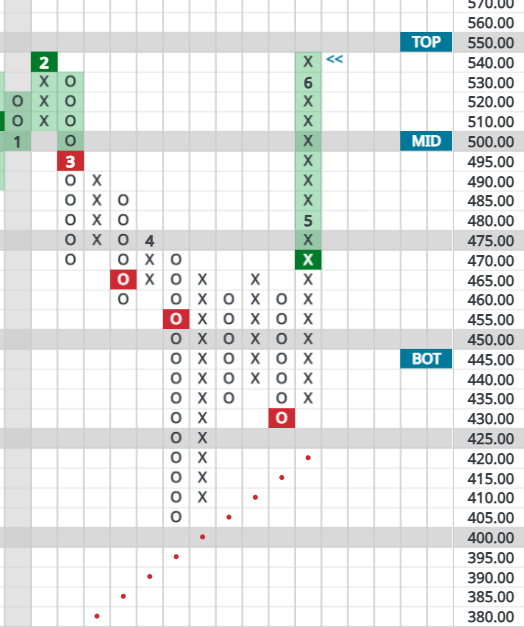Earnings season is here yet again, causing some of the widest stock market swings we’ve seen in a long time.
How has it gone? So far, mostly according to plan, but always prone to some sandbagging — the managment of earnings expectations, particularly by some of the largest publicly traded companies. When drilling down, however, a wide divergence is apparent.
According to Dorsey Wright NASDAQ Economic research…
Large cap earnings growth stays positive in Q1.
We wrote earlier this year to expect earnings estimates to rise over the full year. Analysts have been and still are too pessimistic with them expecting recession…a definite earnings killer. So far about half of S & P companies have reported. The overall growth rate has been 3.3%, below the 4% of Q4 2023. Further, 77% of S&P 500 firms have beaten Q1 estimates – right in line with the 5-year average.
S & P 500 Earnings
Mega Cap Earnings
Mega-caps drive Q1 earnings
We are seeing a wide divergence of earnings reports from the Magnificent 5 or 7, and everyone else.
Apple and Tesla’s prices have recently fallen, and those stocks have fallen out of the newly dubbed “Fab Five” (Amazon, Google, Meta, Microsoft, and Nvidia – which is a better performing subset).
In fact, these five companies actually account for all the Q1 earnings growth in the S&P 500 and then some. They’re expected to see +82% YoY earnings growth in Q1 (chart below, blue bars), compared to negative 4% YoY for the rest of the S&P 500 (green bars).ates) helps explain the gap. Small caps have a 5x larger share of debt that’s floating rate compared to large caps. So they’re feeling the Fed’s rate hike more than larger companies.

Mid and Small Cap earnings
Higher rates contributing to negative earnings growth for mid- and small caps
However, earnings still aren’t looking as good for smaller stocks.
- Mid-caps: Ended their year-long earnings recession with a positive Q4, but are expected to see earnings fall 12% YoY in Q1 (chart below, darker bars).
- Small caps are doing even worse, on pace for earnings to fall 20% YoY (lighter bars) – their seventh straight quarter of negative earnings growth. Although forecasts show them with a stronger recovery through end-2024.
Sector Earnings
Looking at large caps by sector, a few sectors are also seeing earnings decline in Q1 – continuing a trend we’ve seen since Q2 2023:
- Health Care (continued drop in Covid-related spending),
- Energy (even though oil prices are flat YoY, natural gas prices are down 25% YoY), and
- Materials (facing drag from the tail end of the manufacturing recession).
Importantly, it’s true that the Fab Five’s recent returns (up 150% since late 2022) have been driven by real earnings and growth. However, there are signs the market wants proof that growth will continue… despite record revenues, Meta sold off following Wednesday’s earnings report in part due to comments on its earnings call about increased spending on artificial intelligence. At the same time, Microsoft rose after its report yesterday, seeing revenue gains in its cloud business that helps power its AI solutions.
In short, at some time actual profits are important to valuations. Especially if the stock has been pricing them in already for a while.
Forward S & P Earnings outlook
But earnings growth expected to broaden later this year
However, as the year goes on, the S&P 500 is expected to become less reliant on these mega-cap stocks as earnings growth broadens out. The rest of the S&P 500 is expected to see positive earnings growth from Q2, and come into line with the Fab Five’s earnings growth by Q4.
Key takeaway…..
The pessimism surrounding earrings is declining as recession takes seem to fade. Despite all the worries of market participants, many of whom have undoubtedly felt the struggles that mid-cap and smaller companies have been experiencing, we are likely nearing the end of the earnings trough most businesses have gone through.
We will continue to see analysts raise their numbers throughout the second half of the year.


